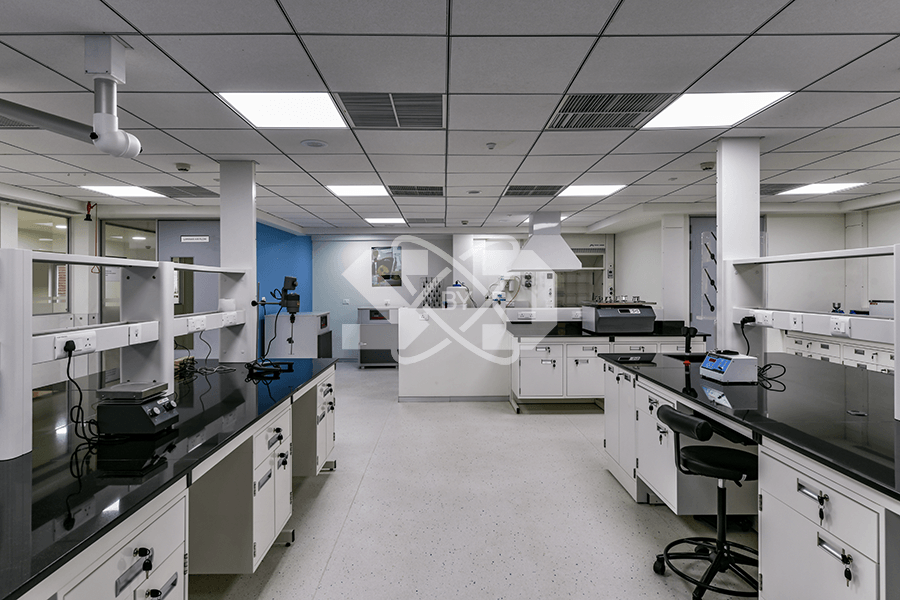Techno Atheism or technology atheists is a legitimate term in the day and age of rapid technological advancements. Apropos of industries that have turned a blind eye, refusing to accommodate advancements laid around by others will be a deciding factor for survival. Paralleling between the atheists of the bygone era, not believing Gregorian calendar, because it was developed by Jesuits of the Church, aptly delineates techno atheists of the contemporary times. Focusing on such advancements, which can benefit R&D laboratories, here is our vision for the future.
We are talking about spaces where latest treatments for cancer, HIV, several chronic ailments, and of course COVID19 are researched, spaces where chemistry is practiced and improved to make the world a better place, places where scientists practice gospels of theoretical science. Each of these labs requires careful planning and immaculate execution. To serve science in the best possible way, companies that refuse to acknowledge the impact of technologies hold no ground against the avalanche of new ideas and better ways of execution practices. We at SbyD believe technology has just begun its golden stride in the way laboratories are built, inhabited, maintained, look and feel.
Even though modern laboratory designers and planners have been around for at least a century, the technological advancements have been sluggish, to say the least. Synonymous with the Toffler Model, this industry took 60-70 years to shed its skin for the first time. The second wave hit with the metallic furniture, and the third with an introduction to automation. But the way forward will be exciting, and time-bound, as the technology has already started probing into every aspect of laboratory infrastructure. As they say in the technology business, only the paranoid survive, lab manufacturers will have to embrace changes every 3-5 years, henceforth.
Can the lab be flexible, can it be energy efficient, can there be stronger computing resources for scientists, can there be better IOT infrastructure for monitoring, can the scientist communicate at the speed of thought, can there be better air ventilation methods, can the risks be completely eliminated these questions have been keeping us awake at night. Even though it’s a double-edged sword, we can unequivocally claim that technology will make the life of scientists better.
As per our research and zest for the future of technology in lab spaces, the following changes would be groundbreaking.
Flexibility of spaces
We all know the rigid nature of current labs has made a substantial dent to the way research projects are time lined, but what if the installation of lab furniture can be completed over the weekend. Bling! Bling! We are pretty sure; this would be the future of lab building. Get done with the reconfiguration over the weekend or go home. SbyD has been constantly pushing the envelope to shorten the project execution time for the past three years. We have had so great results with projects like IRRI, Sai Life Sciences ltd. The key, as we observe was approaching the planning stage differently and innovating furniture itself. There has been a considerable amount of innovation being done in reimagining the installation of services in the lab. The service dropper concept has been in use for quite some time and if we extrapolate our findings, we are not far from executing a project over the weekend.
Collaborative Spaces
“An idea is a salvation by imagination”, thus bringing newer ideas in architectural design is one of the most important ingredients which can contribute to reimagining the labs of the future. What if we can redesign spaces to improve collaboration between scientists? The rigid ideas of island tables can be shadowed with newer ways to design lab spaces. The way fume hoods are spread across the lab can be changed at a layout stage which would give better light, better collaboration opportunities, and better ways to align equipment in the lab.
Intelligent Labs
Introduction of intelligence gathering devices can change the game for scientists. With advancements in the Internet Of Things, it is possible to provide hundreds of perpetual monitoring devices at scientists’ disposal. With communication bandwidth and data collection speeds going skywards, we are nearing the times, when teams of a distinctly placed scientists, will be collaborating in real-time. Another exciting possibility would be to introduce artificial intelligence as the inherent element of the lab environment without compromising the safety of the scientist and the infrastructure. This would allow, streaming live experiments, recording stretches of research, along with time tagging, space tagging, mobile sharing and information inventory keeping much easier.
Healthy Labs
In contemporary labs, health is attributed to air quality and the state of the furniture. Even though these two are basic contributors to maintain labs, the remedial aspect is largely ignored. In most of the cases, HVAC systems are at fault, this would be due to faulty design, inconsistent maintenance, inappropriate usage methods or engineering faults. But now we are gazing into an era of multiple parameters monitoring, through IoT. Parameters such as temperature, pressure, humidity, oxygen levels, gas detection along with light intensity measurement would be inherent to the lab systems. Along with such advanced systems, we can also develop products such as compact carbon filters to keep the air contaminant-free. The HVAC design itself is undergoing a power shift to suit the needs of net-zero labs and green labs.
We at SbyD like to call ourselves true blue technocrats, and thus embracing the technology to make the lab environment better has been our rallying cry for the past five years. With it comes the responsibility to innovate. Apropos of laboratory innovation, SbyD would be dedicated agents of the future.
Developing the best of technologies for science excites us and keeps us paranoid, for good.

